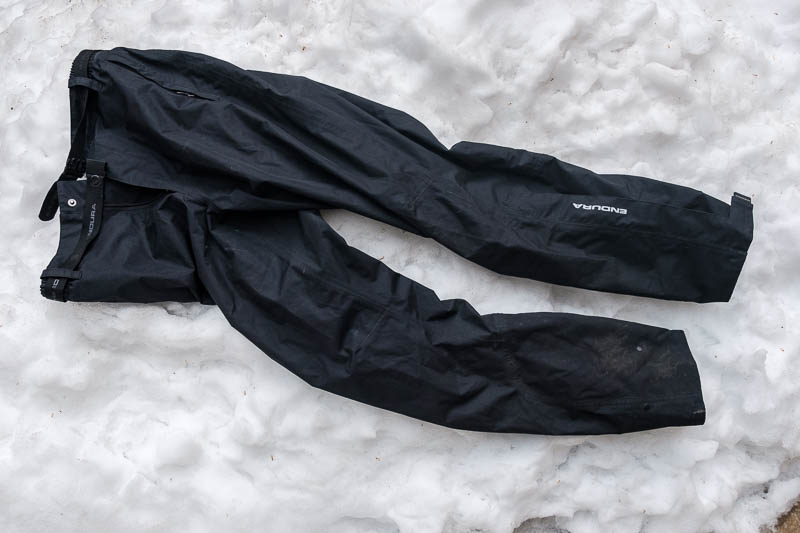
While I don’t mind the TTC, I have always preferred my bike, maybe most in the winter. Bundled in a parka on a packed, stuffy streetcar is no fun and on stormy days delays can make my commute almost 90 minutes. By bike it’s about 30 minutes all year round.
But without the proper equipment it can be miserable. I’ve tried a lot of different bikes, clothing and accessories over the years for usually what amounts to ~10 months of riding a year. This year I’ve refined it to a setup that works for me 365 days a year.
the bike
First, the bike. There are two things that make a huge difference: tire diameter and disc brakes. After hardheadedly riding road bikes and fixed gears in the fall and giving in when the snow starts to fall, I decided I should treat myself to some real traction.

Skinny tires are fine eight months of the year in the city but the minute there is snow on the ground it’s time to look at tires 30c and larger with tread designed for those conditions. You may even want to consider studs, as the City of Toronto’s intepretation of snow removal isn’t so much a “removal” as a “push to the gutter where the cyclists are and hope for the best” I like the Schwalbe Winter K-Guards.
Disc brakes are worth it in the snow, as the temperature in Toronto usually means “slush” which can build up between your fork and seat-stays, bogging down rim brakes.
Beyond these two things the bike doesn’t really matter. Gravel bike, mountain bike, whatever. My approach was to buy a used [Norco Indie 3][indie] from Kijiji and switch it to drop bars for an imitation gravel bike.
full coverage fenders
I don’t have specific product recommendations here because the best fender seems to vary a lot from bike-to-bike but fenders that reach over the rear wheel closer to the ground are essential. Snow sticks to your tires more easily than rain and can spray your back if your fenders aren’t long enough.
bar mitts
These things are the most effective way to keep your hands warm. I’ve tried many types of gloves, but once the temperature drops below about -10°C they all stop keeping my hands warm. Bar mitts give you a wind break that creates a pocket of warm air in front of your hands. Pair them with a thinner inner glove and you also have the benefit of better articulation for braking and shifing compared to big lobster gloves or mittens.
boots

I’ve worn regular non-cycling boots with flat pedals and straps or cages (I like my feet connected to the pedals) but I’ve found this combo can effect the circulation in my feet and make my toes cold quicker. These Fizik X5 SPD-compatible boots are the best option I’ve seen in terms of waterproof performance.
pants

On days where good fenders don’t protect you (like it’s actively snowing or raining) you need pants. I’ve bought every rain pant at MEC and they are all terrible, with nonsensical fit and excessive material in the wrong places. These Endura pants are bulky enough to wear over street clothes but not too bulky that they get caught in your drivetrain. They also have pockets and ventilation, which are not always a given with cycling pants.
lighting
With shortened days, good lighting is a requirement. The Cygolite Metro headlight strikes the right balance between price and brightness. It’s lowest setting is enough to ensure you’re seen in clear conditions and it’s bright settings are plenty for flooding an unlit bike path.
layering
Above the waist the best approach is to have options. I ride at a pace that a good rain jacket over a t-shirt keeps me warm down to near freezing as long as my extremities are protected. Below that I will add fleece and thermal base layers as necessary. Uniqlo Heattech is great and cheap.